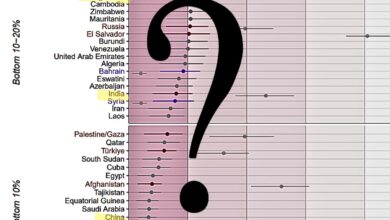
A NASA spacecraft ‘touches the Sun’ for the first time.
A spacecraft has touched the Sun for the first time in history. NASA’s Parker Solar Probe has collected particles and magnetic fields in the Sun’s upper atmosphere called the corona.
This is a major step forward for the Parker Solar Probe and a giant leap forward for solar science. Touching the same material that makes up the Sun will aid scientists in learning more about our nearest star and its impact on the solar system; landing on the Moon allowed scientists to understand how it was formed.
“The “touching of the Sun” by the Parker Solar Probe is a milestone moment in solar science. Not only does this success provide us with a better understanding of our Sun’s evolution and its effects on our solar system, but everything we learn about our star tells us more about stars in the universe.” said an individual for NASA’s Science Mission Directorate in Washington.”
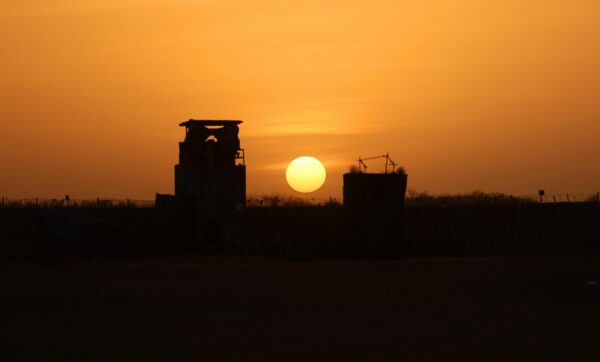
Parker is finding out things that other spacecraft couldn’t see because they were too far away; new findings, like the passage of particles from the Sun that may affect us here on Earth, have been made within the wind. Switchbacks, magnetic zig-zag patterns in the wind, it was found by Parker in abundance near the Sun in 2019. However, how and where they formed is still a mystery. After decreasing the distance to the Sun, the Parker Solar Probe has finally reached close enough to pinpoint one location where they originally came: the solar surface.
The first flyby into the corona – and the promise of many to come – will continue to deliver information on complex processes to look at from afar distance.
“Flying so close to the Sun, the Parker Solar Probe is now detecting conditions in the magnetically dominated layer of the solar atmosphere – the corona – that we have never been able to detect before,” said Nour Raouafi, Parker project scientist at the Johns Hopkins Applied Physics Laboratory in Laurel, Maryland. “In magnetic field data, and visually in photos, we see signs of being in the corona. The spacecraft can be seen travelling through coronal formations that are visible during a total solar eclipse.”
Parker Solar Probe was launched in 2018 to examine the secrets of the Sun by journeying closer to it than any last mission. Parker has finally here, three years after its initial release and decades after its conception.
Unlike Earth, the Sun does not have a solid surface and has a superheated atmosphere consisting of solar material that is gravitationally and magnetically bound to the Sun. Increased heat and pressure force the material away from the Sun until gravity and magnetic fields are no longer strong enough to keep it in place.
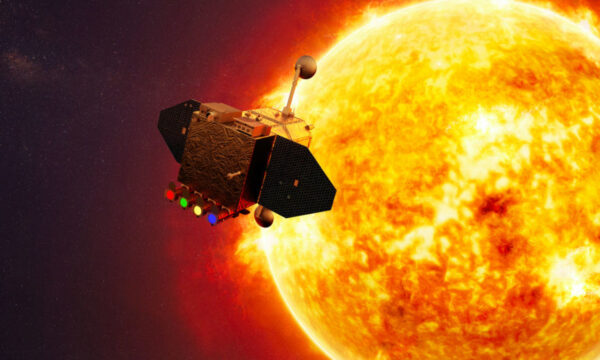
The Alfvén critical surface marks the solar atmosphere’s end and the wind’s start. It is created when solar material has enough energy to pass that limit. It carries the Sun’s magnetic field with it as it speeds through the solar system to Earth and beyond. It moves so quickly beyond the Alfvén critical surface that waves inside the wind can never travel fast enough to return to the Sun, severing their connection.
Until today, no one knew where the Alfvén critical surface was located. Based on distant views, the corona is estimated to be between 10 and 20 solar radii – 4.3 to 8.6 million miles – from the Sun’s surface. Over time, Parker’s spiral trajectory brings it closer to the Sun. It has been consistently below 20 solar radii (91 per cent of Earth’s distance from the Sun) the same the past few visits, placing it in a position to cross the threshold – providing the math is correct.
Parker Solar Probe encountered specific magnetic and some situations at 18.8 solar radii (around 8.1 million miles) above the solar surface on April 28, 2021, during its eighth flyby of the Sun, indicating it had crossed the Alfvén critical surface for the first time and finally entered the solar atmosphere.
“We were fully expecting to meet the corona for at least a short period sooner or later,” said Justin Kasper, deputy chief technology officer at BWX Technologies, Inc. and University of Michigan professor and lead author of a new paper about the milestone published in Physical Review Letters.
Into the Fury of the Wind-
The Parker Solar Probe often sailed into and out of the corona. As evidenced by this, the Alfvén critical surface is not formed like a smooth ball. Instead, the surface is wrinkled by spikes and troughs. Scientists will learn more about how events on the Sun affect the atmosphere.
As the Parker Solar Probe approached 15 solar radii (about 6.5 million miles) from the Sun’s surface, it passed through a structure in the corona known as a pseudostreamer. Massive constructions that rise above the Sun’s surface and can be seen from Earth during solar eclipses are called pseudostreamers.
The spacecraft encountered a location where the magnetic fields were powerful enough to control particle movement for the first time. These characteristics proved the spacecraft had passed the Alfvén critical surface and entered the solar atmosphere, where magnetic forces control the movement of everything in the area.
The mission’s first corona crossing, which lasted barely a few hours, is the first of several planned. Parker will continue to spiral closer to the Sun, eventually approaching the surface at a distance of 8.86 solar radii (3.83 million miles). Parker Solar Probe will most certainly pass through the corona again during upcoming flybys, the next of which is scheduled for January 2022.
“I’m looking forward to seeing what we discover when Parker goes through the corona again and again in the years ahead,” said Nicola Fox, division director of NASA’s Heliophysics Division.
“It’s a critical place to enter because we believe all kinds of physics could turn on,” Kasper added. “And now we’re moving into that realm, and perhaps some of these physics and behaviours will start.”
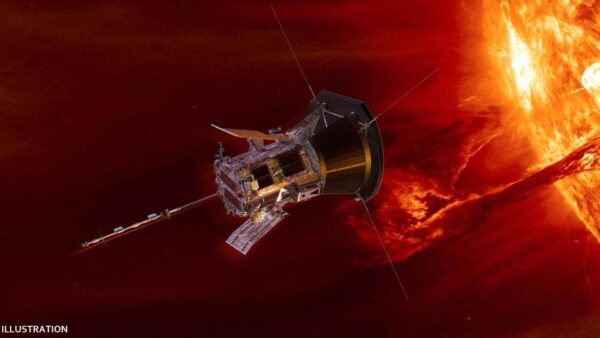
Narrowing Down Switchback Origins-
According to the data, the photosphere, which is visible on the Sun’s surface, is one place where switchbacks begin.
The solar wind is an unceasing headwind of particles and magnetic fields by the time it reaches Earth, 93 million miles distant, and it is organised and uneven as it leaves the Sun. The NASA-European Space Agency mission Ulysses flew over the Sun’s poles in the mid-1990s, and there are several strange S-shaped bends in the magnetic lines of the wind, which detoured charged particles on a zig-zag path. Scientists believed that these sporadic switchbacks were unique to the Sun’s polar regions for decades.
From a distance of 34 solar radii from the Sun, Parker spotted switchbacks in 2019. This piqued people’s interest in the features and led to more questions: What brought them here? Were they formed on the Sun’s surface or by a process that twisted magnetic fields in the solar atmosphere?
On its sixth flyby, Parker orbited the Sun at a distance of less than 25 solar radii. Switchbacks are found in patches and have a larger amount of helium than other elements, which is thought to come from the photosphere.
The magnetic funnels are the genesis of one component of the solar wind and the birthplace of switchbacks. The wind is divided into two types: fast and slow, and the funnels could be the source of certain particles in the instantaneous current.
It’s critical to understand where and how fast wind appears and if it’s linked to switchbacks. It could help scientists solve a long-standing solar mystery: how the corona, which is millions of degrees hotter than the solar surface below, is heated.
While the new results pinpoint the location of switchbacks, the scientists cannot confirm how they are generated. One idea is caused by plasma waves that sweep around the place like ocean waves. Another theory claims they’re formed by an explosive process called magnetic reconnection, which occurs at the intersections of the magnetic funnels.
“I have a feeling we’ll find more about how magnetic funnels are tied to switchbacks as we get deeper into the mission and lower and closer to the Sun,” Bale said. “And, perhaps, answer the question of how they’re made.”
Parker’s closer visits may come up with even more hints about switchbacks and other solar phenomena now that experts know what to look for. Scientists will see into an area important for superheating the corona and propelling the wind to supersonic speeds, thanks to the data released soon.
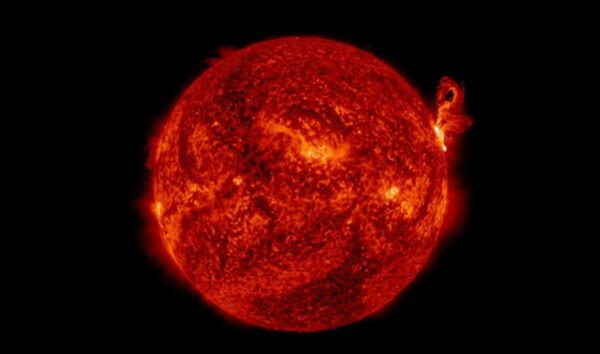
“It’s incredibly thrilling to see our cutting-edge technology succeed in bringing the Parker Solar Probe closer to the Sun than we’ve ever gone, and to be able to return such amazing research,” said Joseph Smith, Parker programme executive at NASA Headquarters. “As the mission gets closer in the following years.”
The Parker Solar Probe is part of NASA’s Living with a Star programme, which aims to learn more about the Sun-Earth system’s effects on life and society. In Washington, NASA’s Science Mission Directorate oversees the Living with a Star programme managed by the agency’s Goddard Space Flight Center in Greenbelt, Maryland. The Parker Solar Probe mission is managed by NASA’s Johns Hopkins University Applied Physics Laboratory in Laurel, Maryland, which built and controlled the spacecraft.
EDITED AND PROOFREAD BY NIKITA SHARMA


